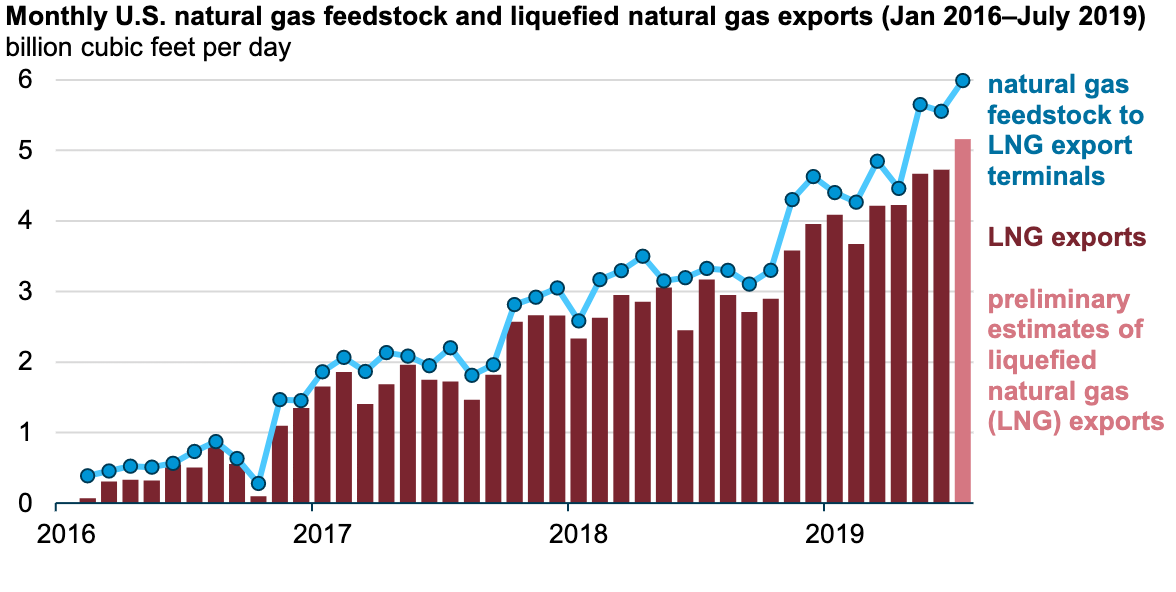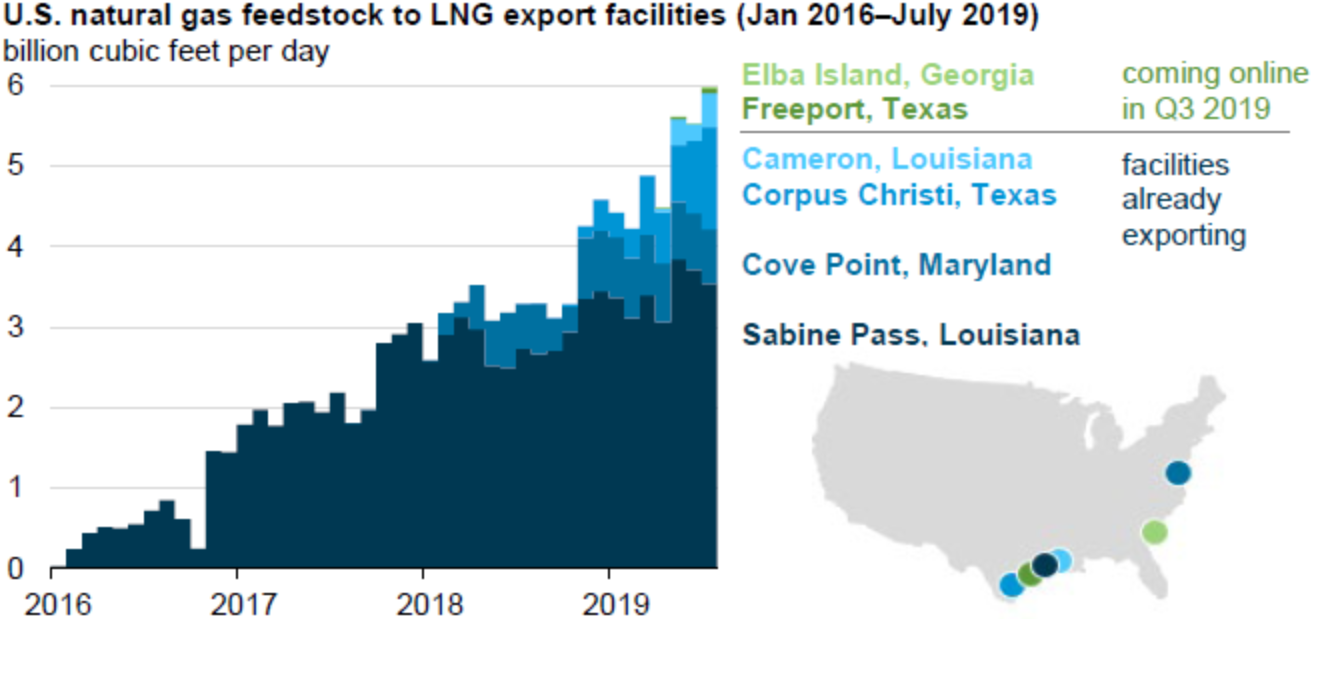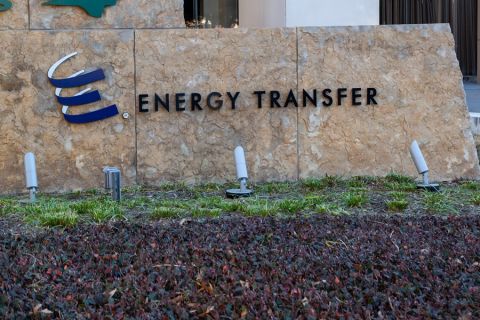Natural gas deliveries to U.S. facilities producing LNG for export set a monthly record in July, averaging 6 billion cubic feet per day (Bcf/d)—7% of the total U.S. dry natural gas production—the U.S. Energy Information Administration (EIA) reported on Aug. 19 citing data from OPIS Point Logic Energy.
The EIA said that in the first seven months of 2019, natural gas feedstock deliveries to LNG export facilities have been the fastest growing among all U.S. natural gas consumption sectors.
Natural gas delivered by pipelines to Mexico and to U.S. LNG export facilities reached 10.9 Bcf/d in July and averaged 10.0 Bcf/d in the first seven months of this year, 30% more than in the same period of 2018. The U.S. has been exporting more natural gas than it imports on an annual basis since 2017, and EIA expects that U.S. natural gas exports will continue to increase as new LNG facilities come online.
RELATED:
Shale Gas Producers Help Fuel US LNG Exports Rise To Top

EIA estimates that U.S. LNG exports set new records in June and July 2019 at 4.8 Bcf/d and 5.2 Bcf/d, respectively, based on tanker loadings data from Bloomberg LP. Natural gas feedstock deliveries to LNG export terminals averaged 5.5 Bcf/d in June and 6 Bcf/d in July, implying that about 15% of the natural gas feedstock sent to LNG facilities was used as fuel in the liquefaction process.
In the first half of 2019, two new liquefaction trains came online: Cameron LNG Train 1 in Louisiana in May and Corpus Christi LNG Train 2 in Texas in June. Current total U.S. LNG export capacity stands at 5.4 Bcf/d across four facilities and nine liquefaction trains.
Two new LNG export facilities—Elba Island LNG in Georgia and Freeport LNG in Texas—plan to place their first trains in service in the next two months. Since July, both facilities have been receiving small amounts of natural gas feedstock deliveries in preparation for LNG production.
Production of LNG at Elba Island was expected to begin in May, but it has been delayed in part because of unevenness in cryogenic temperatures in the moveable modular liquefaction system (MMLS) units, which are using a new technology. Kinder Morgan Inc., the developer of Elba Island LNG, stated that 4 of the 10 MMLS units (or trains) are complete and will be placed in service in the next few months.
The first train at Freeport LNG is scheduled to come online in September 2019, and the remaining two trains are scheduled for the second and third quarters of 2020, respectively. Current plans are to complete construction and bring the remaining trains at Elba Island, Corpus Christi, and Cameron online in 2020 and 2021.

Recommended Reading
Enterprise’s SPOT Deepwater Port Struggles for Customers
2024-04-25 - Years of regulatory delays, a loss of commercial backers and slowing U.S. shale production has Enterprise Products Partners’ Sea Port Oil Terminal and rival projects without secured customers, energy industry executives say.
For Sale? Trans Mountain Pipeline Tentatively on the Market
2024-04-22 - Politics and tariffs may delay ownership transfer of the Trans Mountain Pipeline, which the Canadian government spent CA$34 billion to build.
Energy Transfer Announces Cash Distribution on Series I Units
2024-04-22 - Energy Transfer’s distribution will be payable May 15 to Series I unitholders of record by May 1.
Balticconnector Gas Pipeline Back in Operation After Damage
2024-04-22 - The Balticconnector subsea gas link between Estonia and Finland was severely damaged in October, hurting energy security and raising alarm bells in the wider region.


